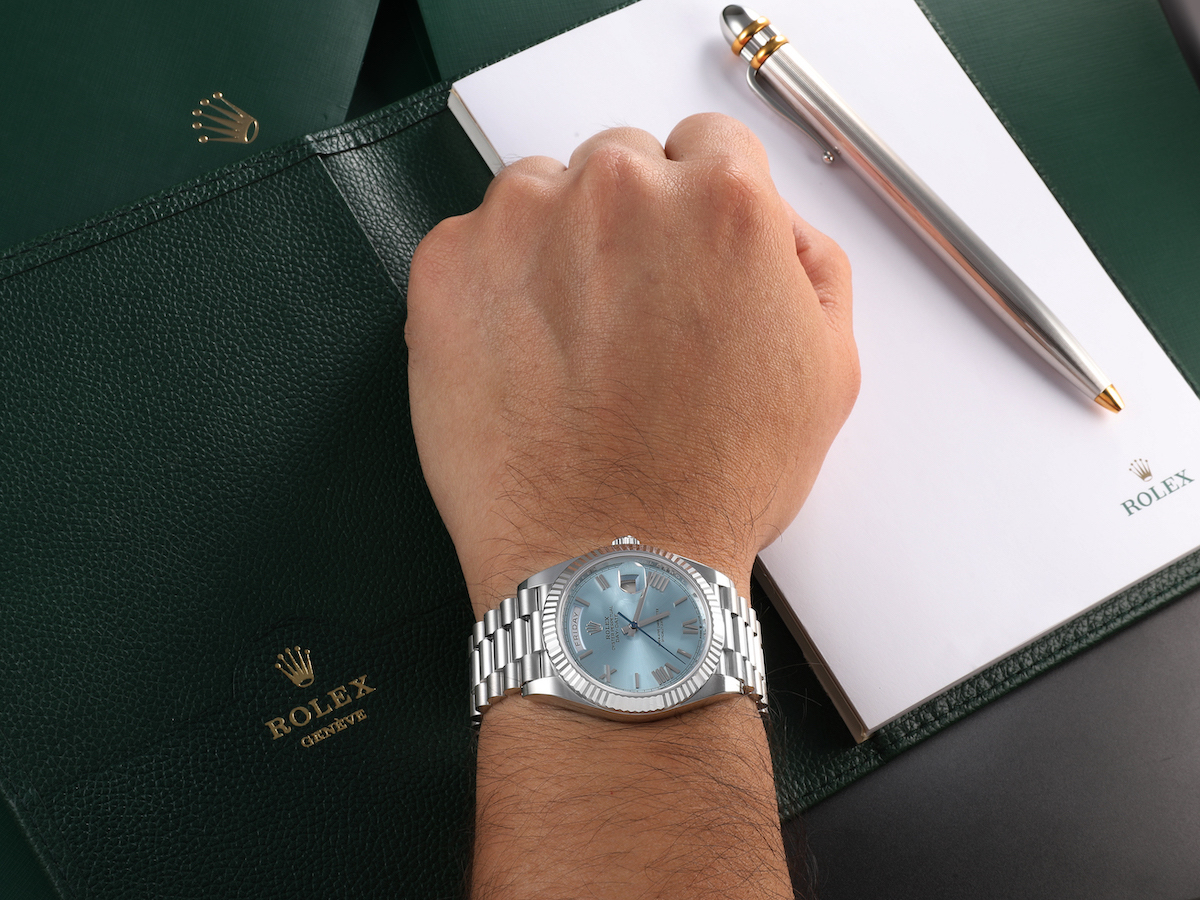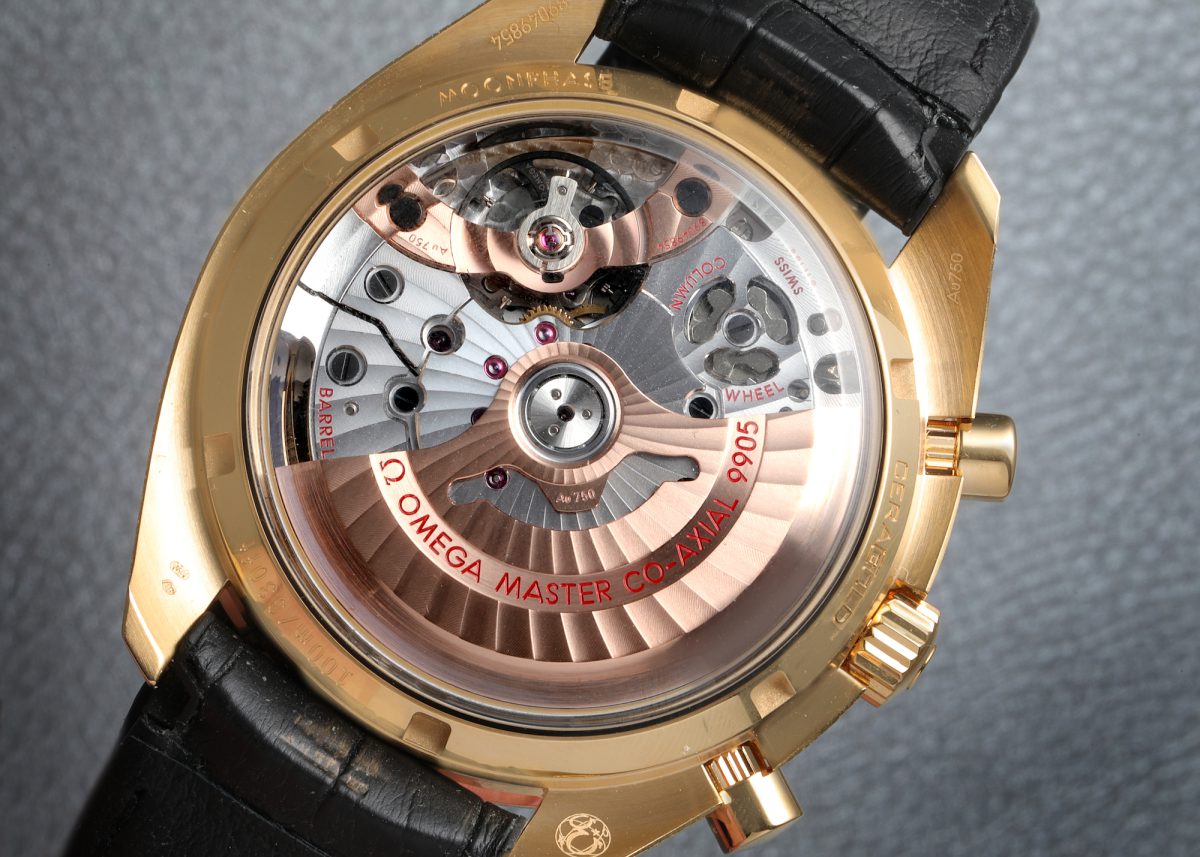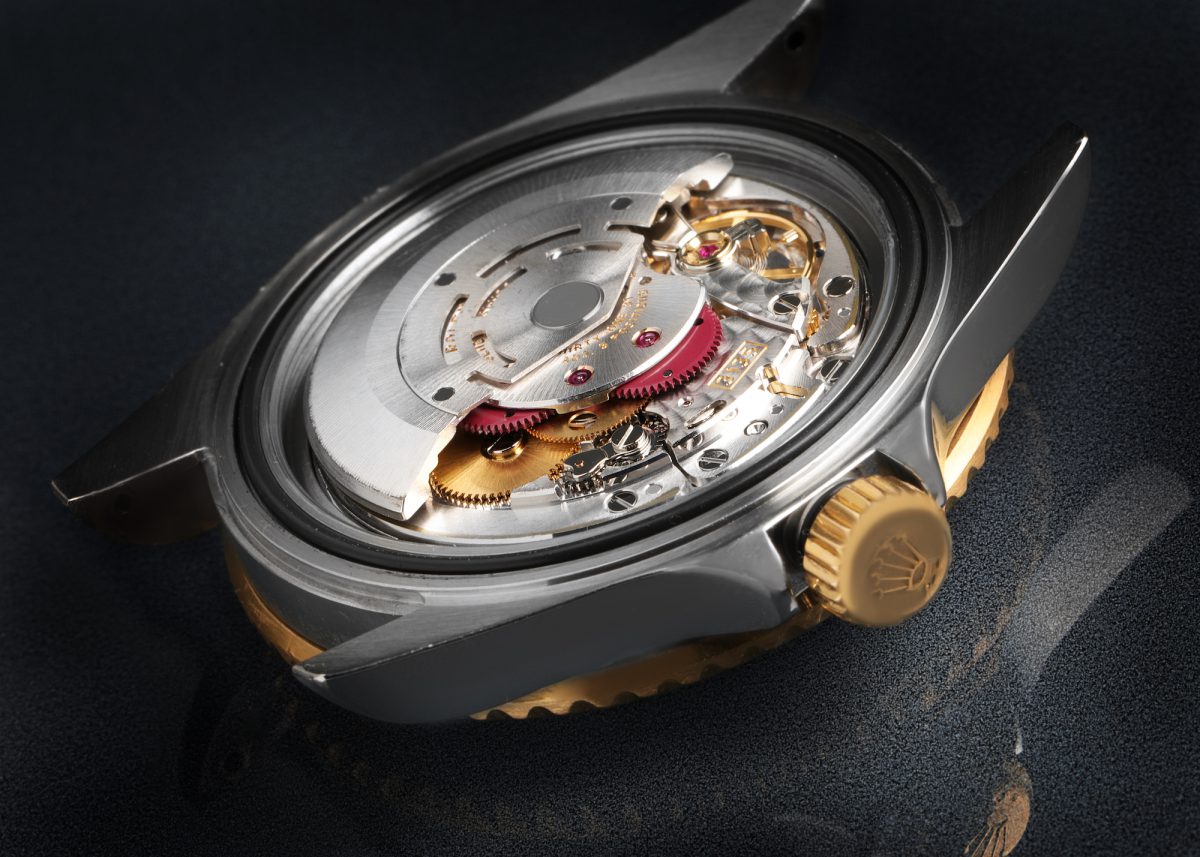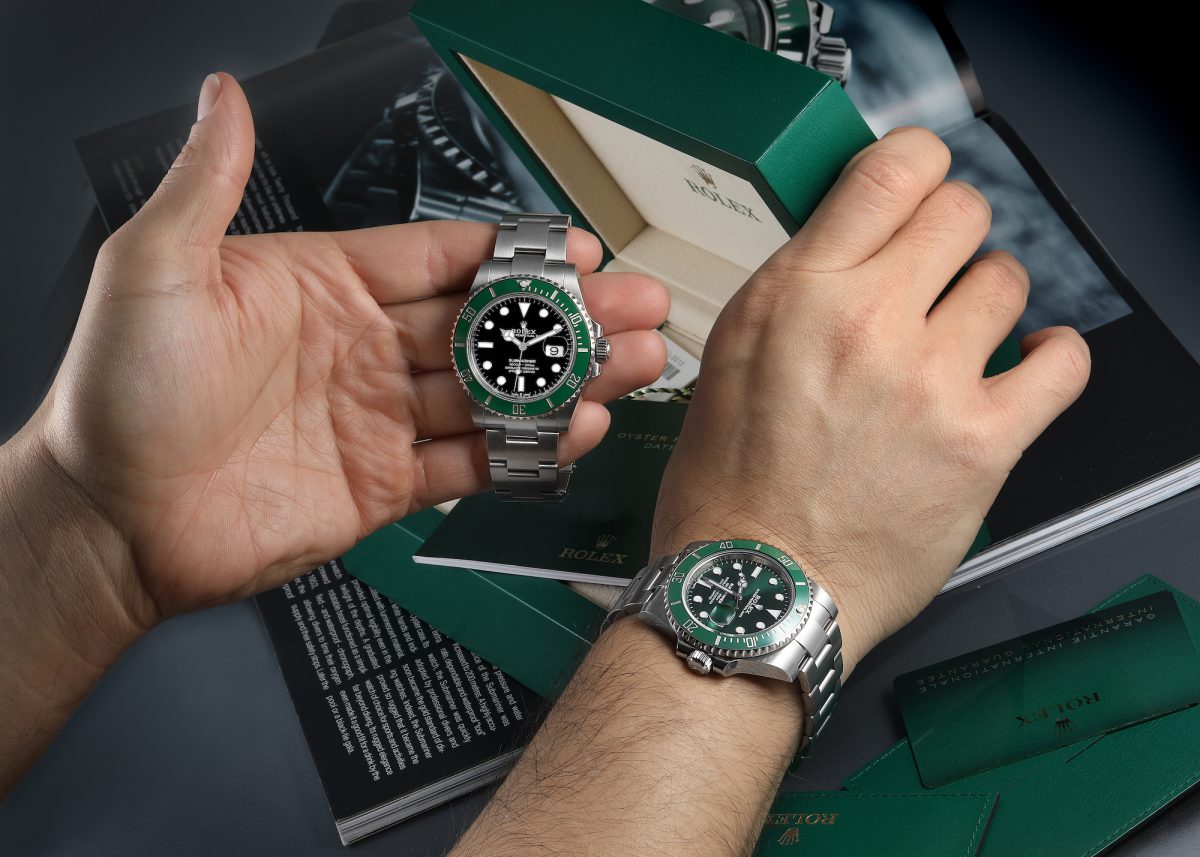Automatic watch movements are a popular alternative to traditional quartz and mechanical watch movements. How do they work though? How do they self-wind? Are they an option for someone that only wears their watch from time to time?
There are many benefits to owning an automatic watch, including the fact that they never require manual winding or battery replacement. In this article, we’ll discuss what makes automatic watches so special and how they work!
What is an automatic watch?
An automatic watch is a self-winding timepiece. A mechanical watch’s mainspring must be wound periodically to power the movement of its gears. The most common way to wind a mechanical watch is by turning the crown at three o’clock or 9 o’clock, which turns a smaller gear that winds up the mainspring.

Most Rolex watches are powered by the Perpetual self-winding movement
Obviously, this doesn’t mean your watch winds itself. Automatic watches have built-in mechanisms that wind themselves as you move your wrist while wearing them. These movements are powered by either rotating weights within the movement itself, or from springs contained within it. Other automatic movements utilize ball bearings that rotate on their own to move the gears inside and wind them through kinetic energy created by your movement during everyday use.
How does an automatic watch movement work?
An automatic watch movement is a self-winding mechanical movement. This means that when you move your wrist, the rotor turns and winds the mainspring instead of twisting the crown like in manual watches. The mainspring powers gears which keep time for your watch to keep accurate time and run for many hours before needing to be re-wound again.
The Omega Master Co-Axial Caliber 9905
Many models come with the glass case back so you can watch everything in motion. The heavy rotors made of materials like tungsten, gold, or platinum have more power to them than mechanical watches and use that kinetic energy to wind the spring.
Do automatic watches need to be manually wound?
With these watches, it’s all in the movement. While some automatic watches do come with a manual wind option, it’s not across the board. If you don’t wear watches all the time, an automatic watch may stop ticking, when that happens you must give it a good shake-up to encourage the gears to start turning again. However, if you’re looking at more modern models, most can be wound by hand when necessary.
The Rolex Caliber 3135, an in-house automatic movement
used in a wide range of Rolex models
Whether you should wind your automatic watch by hand is dependent on the watch and the movement contained inside the case. If you aren’t sure, it’s best to consult with the manufacturers and find out what they recommend. In general, if you have an automatic watch, it’s best to let it do what comes best and keep the manual winding to a minimum. It was designed to wind itself and the components will last longer when you let it do its job.
How do you wind an automatic watch?
The most important thing you need to know about winding an automatic watch is that, unless you wear it all the time, it will not keep running on its own. If you don’t wear your automatic watch for some period, the spring inside will lose its tension and stop working.
Please take note: you cannot overwind an automatic watch. Manual watches don’t have built-in safety features that make this possible. You simply can’t damage the mainspring with over-winding. Manual watches are built with a “slipping spring” that sets in around the barrel when the watch is fully wound. Once this slipping spring sets into place, it doesn’t matter how much you try to turn the crown, nothing will happen. You can even hear this happen.
Rolex Oyster Perpetual, Day-Date 40, and Datejust 41 Watches
If an automatic watch doesn’t seem to be keeping time after winding it up regularly according to these instructions, then something might be wrong with its mechanism: either too much pressure was put onto its gears during manufacture, or there’s some other defect causing friction between parts inside, or simply something unusual happened while wearing it like falling downstairs without noticing until later it’s time to take your watch to be serviced.
Watch Winders
If you know ahead of time that you’ll have a collection of watches and your automatic movements will be sitting for some time, think about investing in a Watch Winder. If you don’t want to have to restart the gears and only want to set your watch once, then it might be worth the investment.
Watch winders are rotating display cases but there are caveats to using one. You can’t just put your watch in any winder. If your winder isn’t set to your watch’s specifications, then you can put added strain on the movement. A good winder allows you to program how often it turns so that your watch is only getting the amount of movement it needs to keep time.
How should I care for my automatic watch?
Your automatic watch is more delicate than a quartz watch and must be worn daily. It will also need to be wound manually on occasion. It should never be exposed to extreme temperatures or sudden changes in pressure. When you’re not wearing it, it’s best to store your automatic watch in a breathable soft cloth pouch or case (vintage leather is ideal) that holds the dust out but lets air circulate.
Rolex Submariner Kermit and Hulk
You should always keep your automatic watch clean and dry. The best way to clean your automatic watch is with a soft cloth dipped in warm soapy water, followed by rinsing with clear water and patting dry with another clean dry cloth.
Do not shower or bathe in your watch. While your watch may be waterproof, it’s the heat that’s damaging. The heat in our shower and bath water can cause the gaskets to expand and contract, reducing their lifespan.
Consider professional servicing for your watch approximately every three to five years.
A Brief History of Automatic Watch Movements
It’s said that the first automatic watch movement was developed in the 1770s by Swiss watchmaker Abraham-Louis Perrelet. The movement of the wearer’s wrist supposedly powered these watches for up to 8 hours.
There are several different types of automatic movements in use today, with some more reliable than others. The most common type is the Swiss lever escapement, which uses a spiral mainspring and has been used in mechanical watches since 1755 (if you own an old pocket watch from before then).
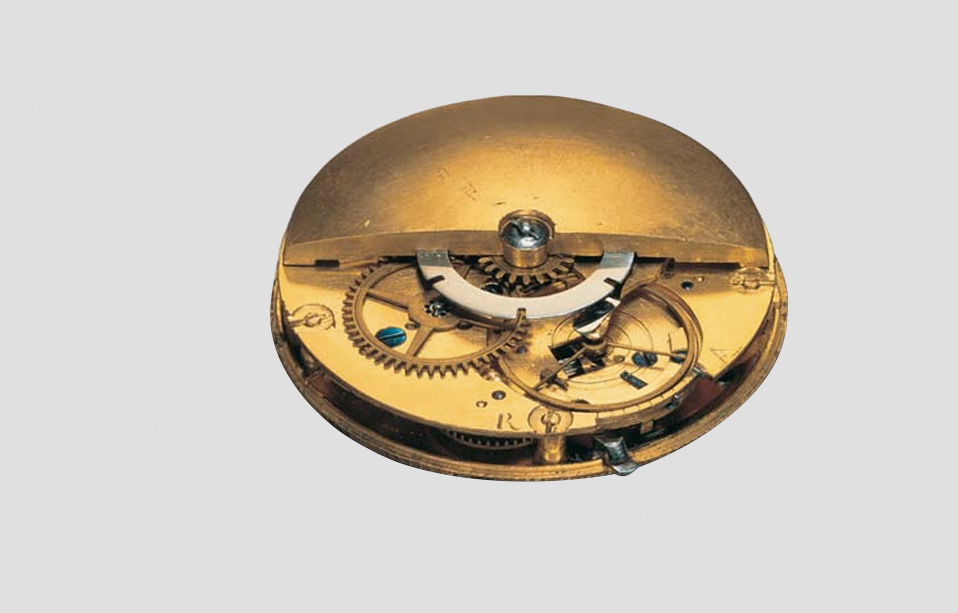
The first self-winding or automatic movement by Abraham-Louis Perellet (photo: Perellet)
A newer style is known as “free sprung” or “perpetual calendar” makes use of ball bearings instead of levers to govern its timekeeping functions; this type was introduced by Seiko in 1970 but remains uncommon today due to its relatively recent development—and can cost upwards of $12,000 per unit!
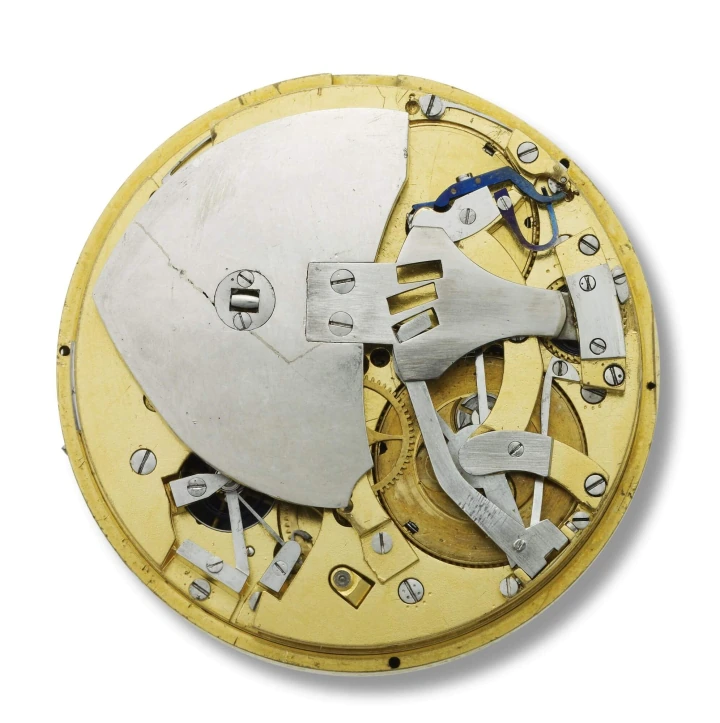
The first automatic wristwatch movement ever created. Dubbed “Perpetuelle”, it was introduced in 1780 by Abraham-Louis Breguet (photo: Breguet)
Automatic watches weren’t available to the public until 1780 and weren’t the wristwatches we see today. These public watches were pocket watches designed by Abraham-Louis Breguet who bought our former Abraham’s designs and changed them slightly. However, these proved to be unreliable and fell off the market in 1800.
You won’t see any more advanced in the automatic watch movement realm until WWI when pocket watches fell in popularity and wristwatches came to the forefront. Wristwatch energy was far easier to transfer into energy for the timepiece compared to their pocket watch predecessors. Credited with the first automatic wristwatch movements was a watch repairer from England called John Harwood.
Automatic Watches: Final Thoughts
The automatic watch movement is an amazing piece of technology that has been around for over 100 years. It’s one of the most popular movements in today’s industry, even though it was first introduced back when we didn’t have cell phones or computers!
All you need to know about how these watches work is that they are powered by a spring that stores energy from your regular movements throughout the day. This means there won’t be any batteries involved with keeping time which makes them perfect for anyone who likes traveling light and having minimalistic accessories on their wrist at all times.
If you’re considering investing in one of these amazing timepieces, check out the pre-owned options at SwissWatchExpo.com and grace your wrist with a piece of history.

